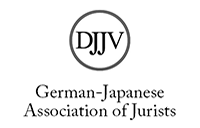Der Weg zum neuen Ainu-Gesetz (Teil 1)
Abstract
This essay describes the path to the two Ainu laws of 1997 and 2019. It is divided into two parts. The first part begins with the designation and the origin of the Ainu as well as their legal-historical position, which, in confrontation with the early modern Japanese state, started off from a policy of segregation, and, especially after the Meiji Restoration in 1868 and under the influence of the Constitution of 1889, developed into a policy of assimilating the Ainu as Japanese citizens. This attitude is embodied by the Protection Act of 1899, which combined protective measures of the Japanese state with the goal of assimilating the Ainu way of life. Under the new constitution of 1946, the Ainu were considered equal citizens, with their socioeconomic disadvantage increasingly coming into focus and prompting the Utari welfare measures beginning in 1972. At the same time, also due to the impact of the international discussion on the rights of minorities and indigenous peoples, the societal situation had changed in such a way that there was persistent criticism of the Protection Act, eventually resulting in the Utari Association proposing the Ainu Law in 1984. It was this draft proposal that ultimately facilitated a social debate that led, on the one hand, to the recognition of the Ainu as an ethnic minority and later as an indigenous people and, on the other hand, laid the foundation for the passage of the two laws of 1997 and 2019. The second part of the article will present the legal developments after the publication of the draft proposal and gives an overview over the content of the two laws, as well as over the debate about them and their implementation.






